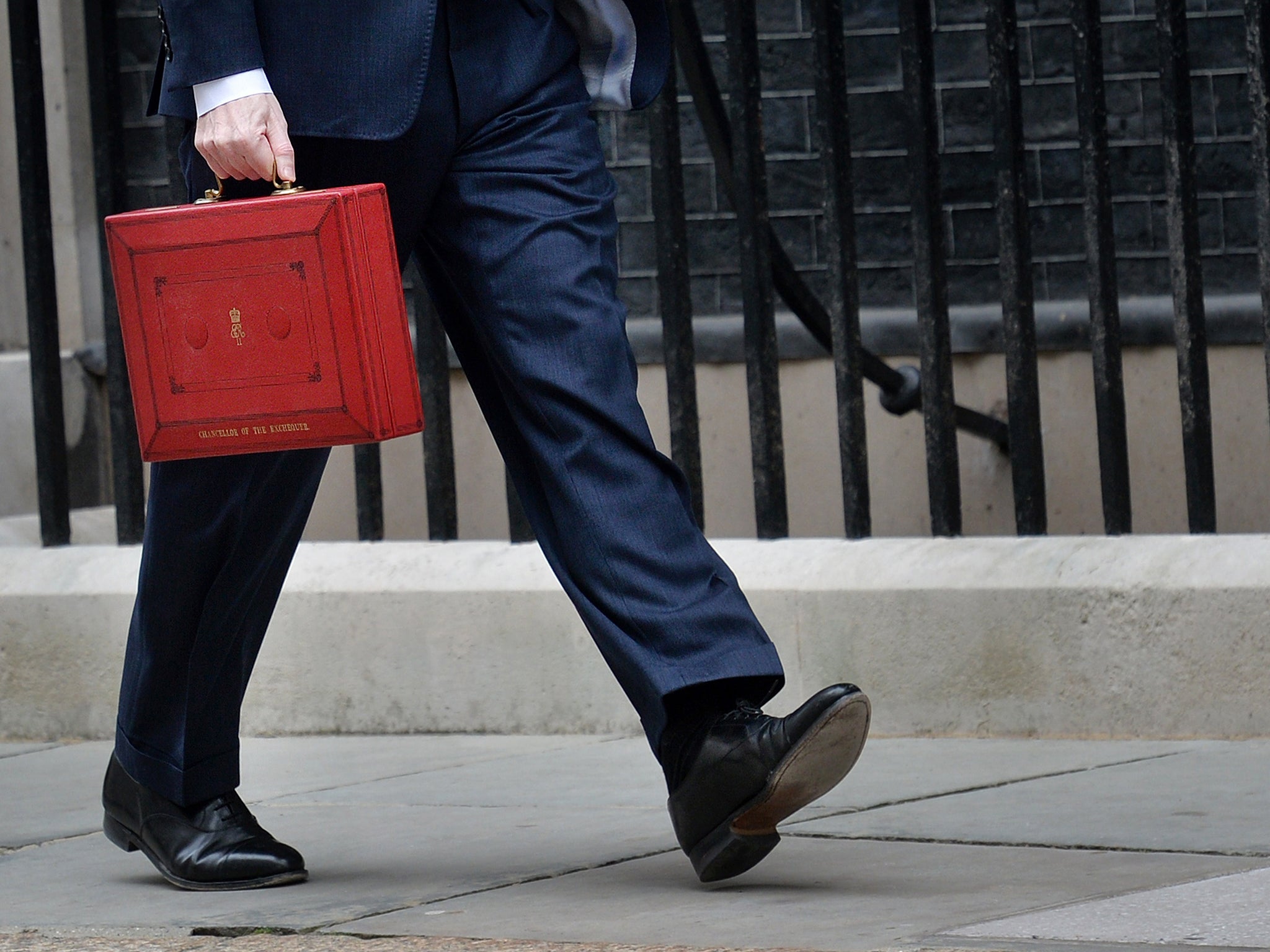Crunch the numbers this way or that, more cuts are going to hurt
Any leeway the Chancellor had for the July budget has been consumed


And now to the Budget. We have of course already had one this year from George Osborne but that was before the election – and before the pre-election promises made in the heat of battle. The numbers, however, have not changed and while we have a wee way to go before 8 July, you can begin to catch a feeling for how our public finances might develop over the next five years.
We know the starting point, for on Friday we heard updated figures for the financial year that ended last month. The deficit was 4.8 per cent of GDP. You can debate whether the Chancellor really needs to get back to balance by 2018-2019 or whether that could be rolled back a year. You could even argue that a modest deficit of, say, 1 per cent of GDP would be acceptable, though that would not put us in great shape for the next global recession. You can make the numbers look better by selling public assets faster. But whatever gloss you put on it, there is a long way to go. Much depends on what happens to revenue, and that in turn depends on what happens to growth. And much depends on the cost of financing the national debt, which will be determined by the pace at which interest rates rise.
So there are huge uncertainties. But as a rule-of-thumb, if you say half the adjustment was made in the previous parliament, so we have to do the same again, you won’t be far out.
Most, not all, has to be done on the spending side. That is partly because of a pre-election commitment not to raise the three largest taxes, income tax, VAT and National Insurance, plus the implied commitment not to increase number four, corporation tax. But it is also because raising rates may reduce revenue, or at least not increase revenue by much. Put up tax on motor fuel and people drive less and buy more fuel-efficient cars. Increase tobacco duty and you cut smoking. If you knock off oil and gas revenues, the total tax take has stuck at around 33 per cent of GDP since 1965. So to get more revenue you need more growth. It is that simple.
How much growth we get depends on how quickly we hit capacity restraints. How low can unemployment go? Will productivity rise – or are we under-measuring both output and productivity? How much higher can participation rates go, when they are already at an all-time high? A common-sense conclusion is that there will be decent growth, and hence a decent increase in tax revenues, over the next few years. That is encouraging. However there will be no windfalls, such as occurred for Gordon Brown with the mobile-phone licences auction, and the risk in this low-inflation world is that revenues will come in on the weak side rather than the strong.
Thus it comes back to spending. There are two types of spending: one is the money the government spends (the NHS, defence, etc), the other is what it hands over to us to spend (pensions, benefits, etc). On the first, the issues are how much should be ring-fenced and how well the unfenced areas can cope. On the second, the decision turns on how much pensions and benefits should rise or not rise.
For the unfenced chunks of spending we are moving into unknown territory. The great unknown is whether experience of cutting costs enables you to cut more, because you develop a mindset that constantly seeks efficiencies; or whether because you cut the easy things first, it becomes progressively harder to find savings. If the first is dominant, then our public sector can get through the next five years without too much systemic damage. We get leaner, and maybe better, public services. But if the latter dominates, then the outlook is troubling. Given the rising demands, even the ring-fenced services, including the NHS, have to try to establish more of an efficiency-seeking mindset. Not easy.
The other side of public spending is really a choice between welfare and pensions: the relatively young, and the old. The old vote, and it is fairly clear which way the Chancellor will incline. While unemployment continues to fall, there will be a little fat in the system, for money is being saved. Once it stops, the underlying pressures will become more evident.
Adam Corlett of the Resolution Foundation has done an assessment of the Chancellor’s options, arguing he does have a little leeway but has to use it up, thanks to the election promises. Finding the savings would be tough indeed. My plea is that the squeeze is done in a thoughtful, measured way. At a party last week I met one of the new ministers who will have to make big cuts. There was a bit too much of the swagger about him: he had his assistant taking notes and scurrying off to get him another drink. You can understand these people are pleased with themselves, but they will be more effective if they impose the inevitable pain with humility and care.

Join our commenting forum
Join thought-provoking conversations, follow other Independent readers and see their replies